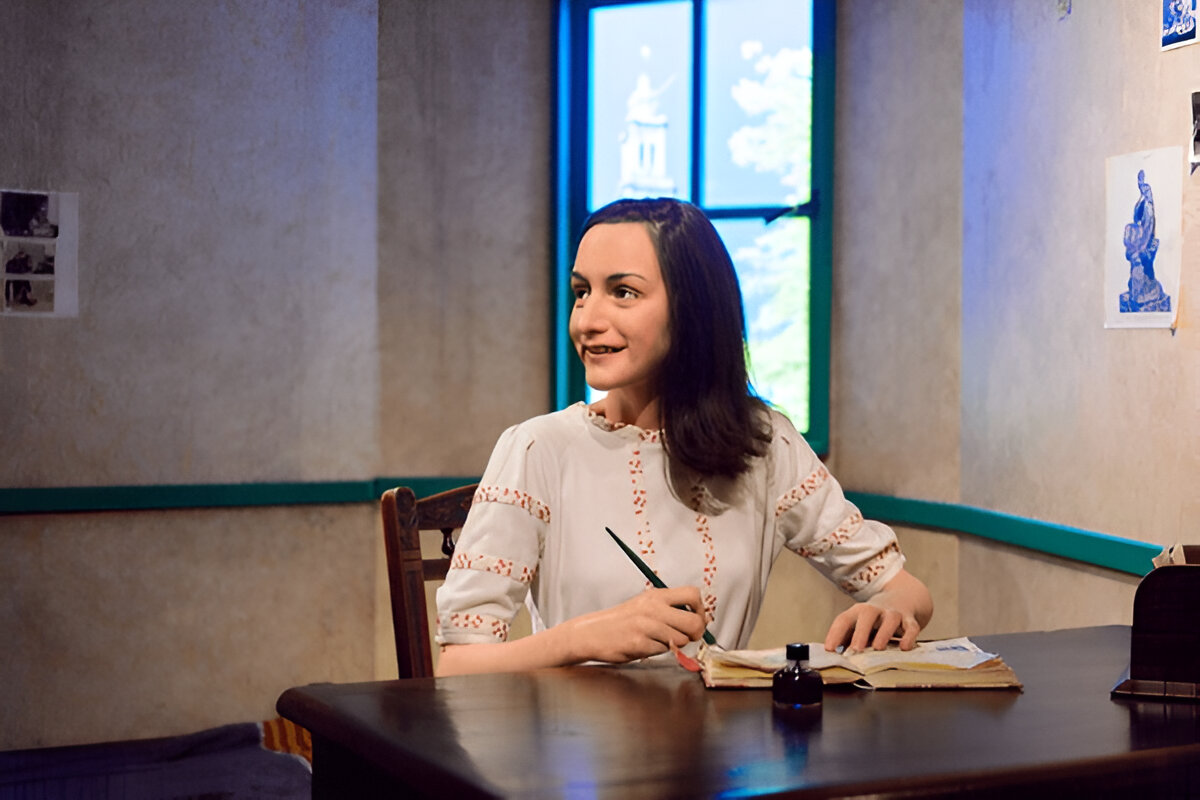
When we think of Anne Frank, we often think of her as a symbol of hope and resilience in the face of unimaginable horror. Her diary, The Diary of a Young Girl, is a masterpiece of literature and a crucial historical document. But many people wonder, how did a teenager in hiding manage to write a book of such profound depth?
The answer isn’t as simple as just “keeping a diary.” Anne’s project was far more complex and intentional. Her work was a testament to her passion for writing, her incredible self-awareness, and a specific moment in time that changed her creative process forever.
The Beginning: A Gift for Her Thirteenth Birthday
Anne Frank received her diary on June 12, 1942, for her thirteenth birthday. She named it “Kitty,” a fictional friend she could confide in. Initially, she wrote in it as any teenager would—about her school life, her crushes, and her family.
This early period of writing was a private, personal act. The diary was her outlet, a place where she could express her feelings and thoughts without judgment. It was a cherished possession, a small piece of normalcy in an increasingly abnormal world.
Going into Hiding and the Shift in Her Writing
A few weeks after her birthday, Anne and her family went into hiding in the “Secret Annex.” This new reality dramatically changed the nature of her writing. Her diary entries became less about daily life and more about the psychological and emotional challenges of confinement.
She wrote about her family’s arguments, the constant fear of discovery, and her own internal struggles. The Annex became both her prison and her creative space. The silence and isolation forced her to look inward, and her writing became more reflective and analytical.
The Catalyst: A Call to Action on the Radio
In March 1944, a pivotal moment occurred. Anne heard a broadcast from Gerrit Bolkestein, a member of the Dutch government-in-exile. He pleaded for the public to preserve documents of the war for future generations.
He specifically mentioned letters and diaries. This broadcast was a call to action for Anne. It sparked a new ambition within her: to turn her personal diary into a published book after the war. This was no longer just a private project. It was a mission.
The Rewrite: From Diary to Manuscript
Inspired by Bolkestein’s speech, Anne began a monumental task: she started to rewrite her diary. She decided to create a manuscript for publication, titled The Secret Annex.
She meticulously edited her original entries, omitting parts she found uninteresting and adding new sections. She wrote on loose sheets of paper, filling them with her thoughts and observations. This process shows her maturity as a writer. She understood the difference between a raw diary and a polished piece of literature.
She used the names of her companions in hiding in her original diary. But in the manuscript, she changed all the names to protect their identity, should the manuscript be found. This foresight was incredibly mature and highlights her professional approach to the work. She was thinking like a real author, not just a girl writing in her journal.
A New Chapter: The Second Diary
While working on her manuscript, Anne also kept a second diary. This parallel writing project allowed her to record new events while still editing her earlier work. The existence of these two different versions of her diary—the original and the edited manuscript—is what gives us such a rich and complete picture of her life in the Annex.
The original diary, with its raw, immediate entries, captures the moment-to-moment experience. The revised manuscript, on the other hand, shows her looking back on those events with reflection and perspective. It demonstrates her growth as a person and a writer.
The Final Chapter and an Unfinished Legacy
Anne continued to write and revise until the Secret Annex was discovered by the Nazis on August 4, 1944. Her writing supplies, including her diaries and manuscript pages, were scattered across the floor.
After the raid, Miep Gies, a helper who risked her life to aid the Frank family, found the papers and kept them safe. She held onto them, hoping to return them to Anne one day.
Sadly, Anne did not survive the concentration camps. After the war, Miep Gies gave the papers to Anne’s father, Otto Frank, the only survivor from the Annex. Otto was faced with the painful but important task of publishing his daughter’s work. He combined Anne’s original diary entries and her edited manuscript to create the version we know and love today.
In the end, Anne Frank’s work is not just a single diary. It is a compilation of a personal journal, a conscious literary project, and a final, moving tribute to a young writer who, against all odds, chose to use her voice to tell her story. Her foresight, ambition, and talent ensured that her words would live on, speaking to millions for generations to come.


